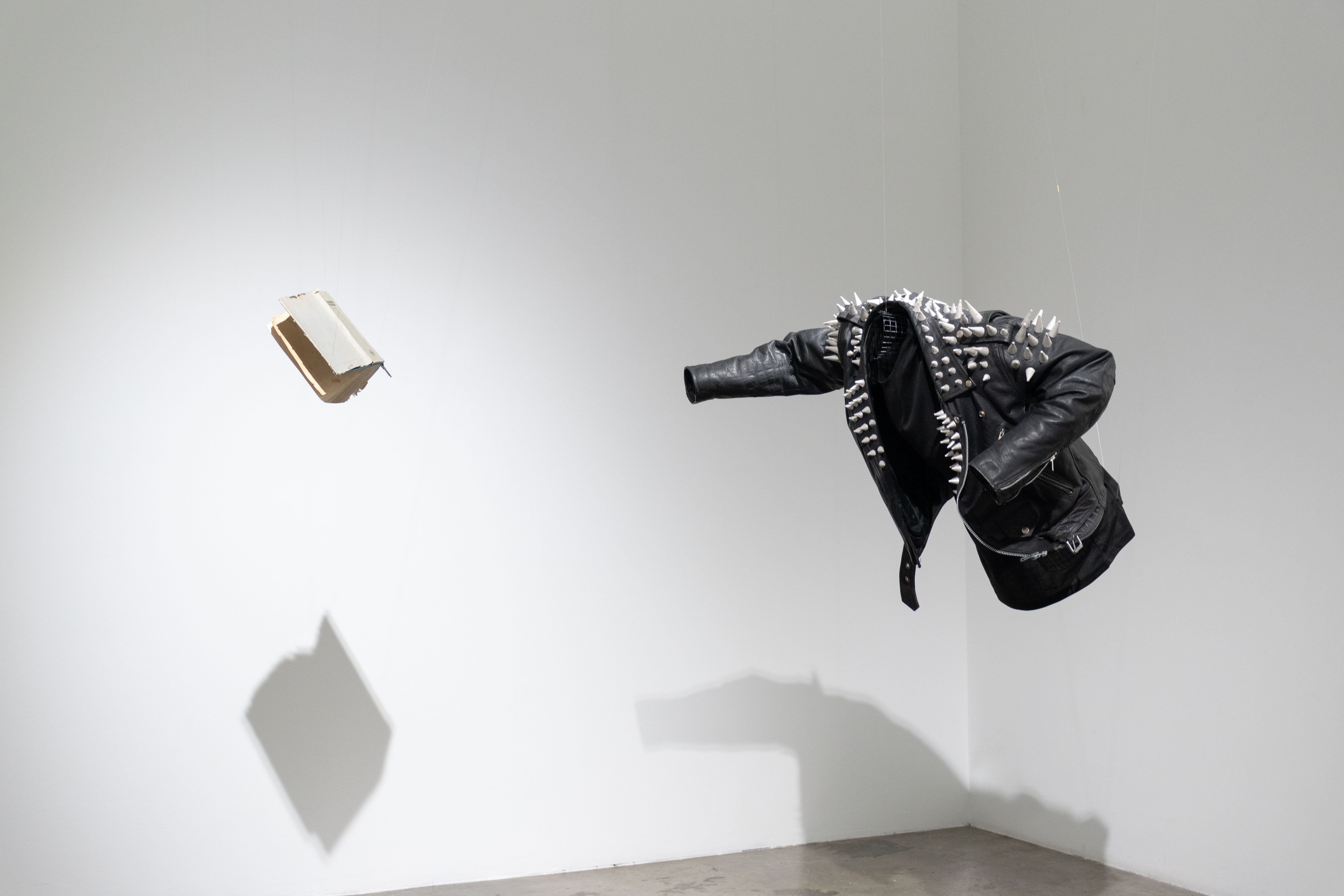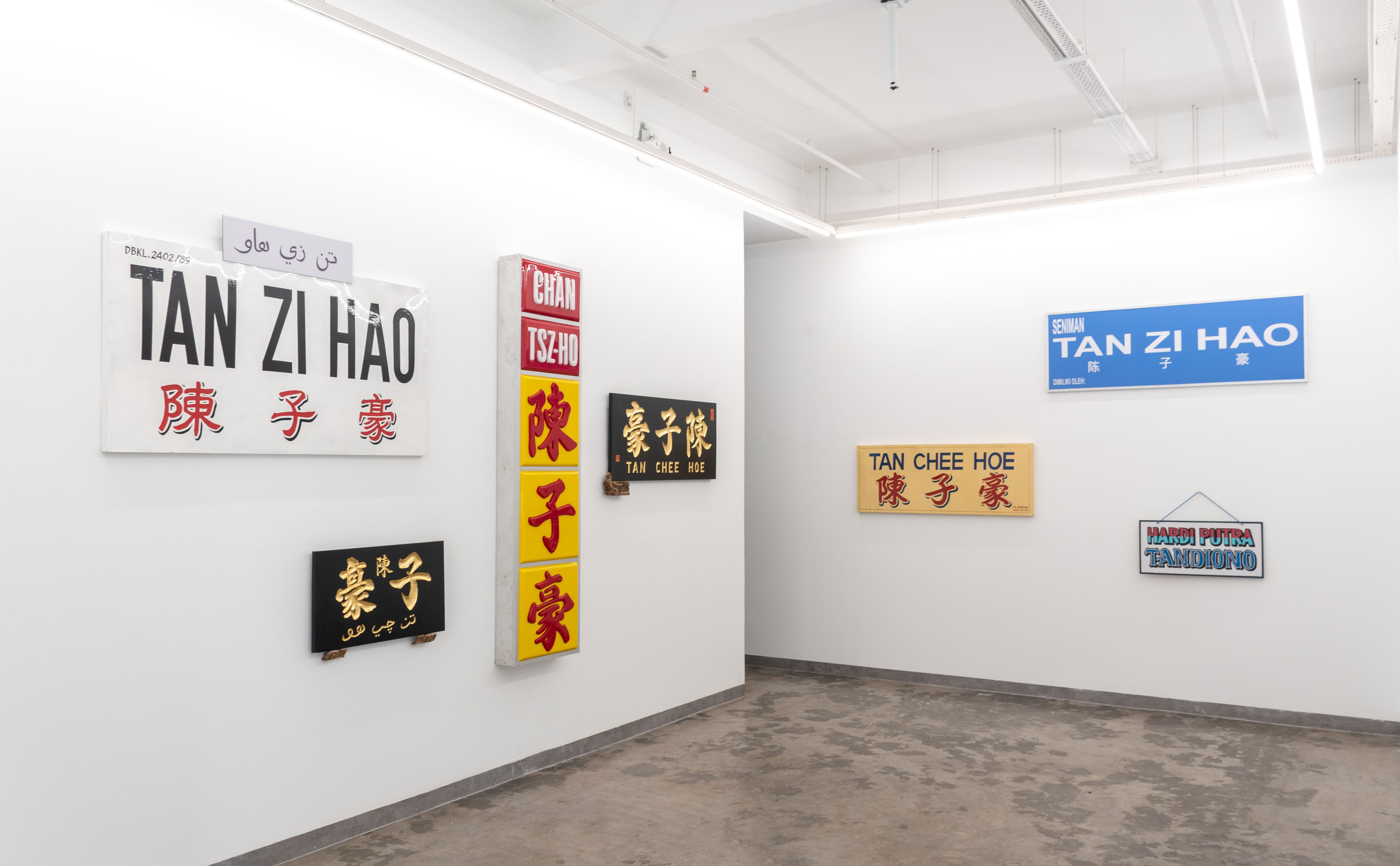Shows
Tan Zi Hao’s “The Tongue Has No Bones”

Tan Zi Hao
The Tongue Has No Bones
A+ Works of Art
Kuala Lumpur
July 6–27
The tongue is a peculiar organ. A complex structure comprising pure muscles—in scientific parlance, it is a “muscular hydrostat”—the tongue finds cognates in other mobile appendages, such as octopus tentacles and elephant trunks, in that it can maneuver and warp without bones. The tongue also enables key biological functions such as eating, breathing, and, especially important to humanity, speech—the powers of which are alluded to in the saying “the tongue has no bones,” commonly coined across many languages. This symbolism is not lost on Malaysian artist Tan Zi Hao, who deployed it as the title of his second solo presentation with Kuala Lumpur-based gallery A+ Works of Art. Reflecting and refracting the lingual politics of postcolonial Malaysia, a country occupied by predominantly British interests between the late 18th and the mid-20th century, Tan’s new suite of installations and moving images examine and reimagine language as a medium of ideological and sociocultural transmissions, replete with a tongue-in-cheek sense of humor.

Installation view of TAN ZI HAO’s A Future Imperfect Presumed Dead, 2024, automotive paint on reclaimed woods, and speaker, 198 × 63 × 66 cm. Photo by Hariz Raof. Courtesy A+ Works of Art.
In the middle of the gallery was a wooden casket on a low plinth. Spray-painted with silver Malay slogans rendered phonologically analogous to the four main orthographic scripts—Jawi, Roman alphabet, Chinese, and Tamil—used across contemporary Malaysia, a frantic burst of knocking erupted from within the casket sporadically, scaring the odd visitor and piquing the interests of viewers lucky enough to be some distance away. As a feat of social necromancy, this installation A Future Imperfect Presumed Dead (2024) invokes both the iconography and happenstance of a little-known event in the annals of Malaysia: the Keranda (literally “Coffin” in Malay) 152 demonstration, during which demonstrators carried around a spray-painted casket and burned a paper effigy of Tunku Abdul Rahman, first prime minister of independent Malaysia, to protest the continued usage of English as an official language of education and administration instead of Malay, the national language that the Federal Constitution had defined. Intimating the undead nature of how social imaginaries of the nation-state are deeply intertwined with its linguistic conceptions, Tan’s speculative proposal of a universal Malay co-constituted by the speech and writing of other ethnic groups invites broader considerations and reflections of belonging and minority politics.
Nearby, the single-channel video In The Beginning, R Was Only a Head (2024) further scrutinized the etiology of racial violence in post-independence Malaysia. A set of three looping vignettes, showing a Chinese man, then a Malay woman, and finally an Indian man, each turning to look to the left side while donned in a different ethnic outfit, the work alludes to an episode during the deadly May 13 race riots of 1969, when a Chinese man attributed his survival to a Malay family that dressed him as one of them. Referencing the pictographic origins of the letter “R” as a left-facing head in ancient Egyptian, R also serves as an abbreviation for three out-of-bound concepts—race, religion, and royalty—within Malaysian discourse and media.

Installation view of TAN ZI HAO’s The Impossible Self-Portrait, 2024, wooden plaques, aluminium sheets, neon signboard, thermoformed signboard, aluminum composite panel, plywood, nylon rope, plaque holders, wooden and metal framework, gold leaves, enamel paint, and emulsion paint, dimensions variable. Photo by Hariz Raof. Courtesy A+ Works of Art.
Tan’s excavation of the granular lingual politics took on a more private dimension with the installation The Impossible Self-Portrait (2024), which investigates the artist’s own name as a confluence of larger sociopolitical forces and the embodied cultural histories of his parentage. Inscribing and transcribing his name “Tan Zi Hao” on diverse substrates including wooden plaques, a neon signboard, a thermoformed signboard, and aluminum composite panels in different types and scripts, Tan unpacks both the relationship between translation and legibility, and the semiotic politics of naming by deconstructing how his self and identity came to be constituted. In one iteration, Tan’s name is rendered in the Indonesianized form “Hardi Putra Tandiono,” referring to the nativization process undergone by Chinese Indonesian communities during the surge of anti-Chinese violence under Suharto’s New Order administration. In contrast, in another version, his name is transliterated to its Hokkien pronunciation as “Tan Chee Hoe,” highlighting the intralingual contestations happening even within the same linguistic family. The naturalized system of hybridization in the making of “Tan Zi Hao” retained his Hokkien surname but converted his given name to Romanized Mandarin.
%20The%20Impossible%20Self%20Portrait%20_%202024%20_%20Dimensions%20variable_%202.jpeg)
Details of TAN ZI HAO’s The Impossible Self-Portrait, 2024, wooden plaques, aluminium sheets, neon signboard, thermoformed signboard, aluminum composite panel, plywood, nylon rope, plaque holders, wooden and metal framework, gold leaves, enamel paint, and emulsion paint, dimensions variable. Courtesy A+ Works of Art.
While frequently giving voice to a certain whimsy, Tan’s works nevertheless presented thoughtful introspections on the historical hauntings that persist in contemporary Malaysian society. By underscoring the corporality and materiality of language as a site of active negotiation between political capital and sociocultural affinities, Tan deftly demonstrates that how we talk about things inevitably changes the things we talk about—that though the tongue has no bones, it is entirely capable of crushing them.
Alfonse Chiu is an artist, designer, and curator based between Taipei, Singapore, and New Haven.







